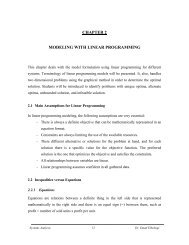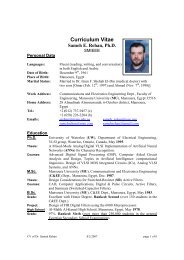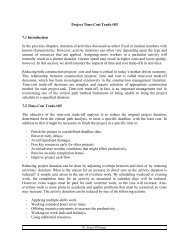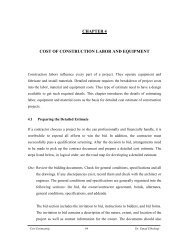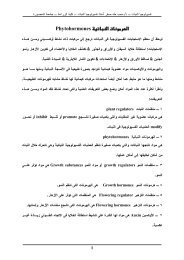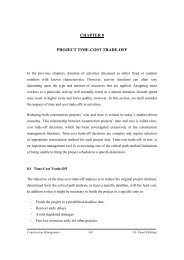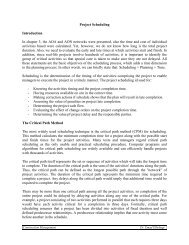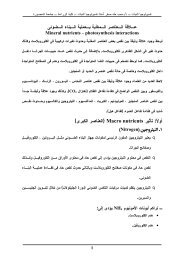Thyroid and Parathyroid
Thyroid and Parathyroid
Thyroid and Parathyroid
You also want an ePaper? Increase the reach of your titles
YUMPU automatically turns print PDFs into web optimized ePapers that Google loves.
secretion is increased, but appropriately so. The effect of PTH in human beings is to<br />
increase serum calcium concentration (Fig. 36-45). Hypercalcemia occurs because the<br />
: principal actions of PTH involve the following<br />
. Increase of bone osteoclast <strong>and</strong> osteoblast activity<br />
Increase in rate of conversion of 25-hydroxycholecalciferol (25- hydroxyvitamin ( 2)<br />
D 3) to 1,25-dihydroxycholecalciferol (1,25- dihydroxyvitamin D 3) in the kidneys by<br />
. stimulation of 1 a-hydroxylase activity<br />
Increase of gastrointestinal absorption of calcium by enhancing vitamin D<br />
. synthesis<br />
. Increased excretion of bicarbonate by the kidney<br />
Decrease in serum phosphate level by increasing the excretion of urinary<br />
. phosphate<br />
PTH is a single-chain polypeptide of 84 amino acids. The entire polypeptide is<br />
referred to as intact PTH, a hormone that has a half-life of 2 to 5 min. The N-terminal<br />
PTH portion (1–34), also called the amino (N) terminal, is biologically active, with a<br />
half-life of 2 min. The C-terminal PTH portion (35–84) or carboxyl (C) terminal, is<br />
biologically inactive, with a half-life of approximately 30 min. Among other effects,<br />
PTH acts to promote bone resorption <strong>and</strong> to increase calcium absorption from filtered<br />
. urine in the renal tubule<br />
Calcium<br />
Calcium is the principal regulator of parathyroid hormone release. This regulation is<br />
mediated by calcium receptors or other receptors on the parathyroid cell surface. A<br />
membrane protein that has been proposed to constitute such receptors (calcium ion–<br />
sensing receptor [CaR]) demonstrates reduced expression in hyperparathyroidism <strong>and</strong><br />
seems causally related to the relative insensitivity of the secretion to external calcium<br />
in pathologic parathyroid cells. This protein consequently may be an important cause<br />
for the hypercalcemia of this disorder. Modulating the functions of such proteins<br />
comprises interesting means of future therapy in several disorders of mineral<br />
metabolism. Increased knowledge of these proteins <strong>and</strong> parathyroid pathophysiology<br />
may clarify the presence of relevant mutations, secretory derangements, <strong>and</strong><br />
propensity for cell growth, from which accurate classification of parathyroid diseases<br />
. <strong>and</strong> improved treatment strategies might evolve<br />
Calcium is the most abundant cation in human beings, <strong>and</strong> its distribution within cells<br />
is essential for virtually all physiologic functions. Calcium balance in a normal<br />
individual is tightly regulated. The body contains approximately 1000 g of calcium,<br />
with minimal variations from day to day in serum calcium concentration (Fig. 36-46).<br />
Total serum concentrations, as tested by routine laboratory analysis, are accurate as<br />
long as serum protein concentrations are normal. Total calcium level must always be<br />
considered in its relationship to plasma protein levels, especially serum albumin (for<br />
each gram per deciliter of alteration of serum albumin above or below 4.0 mg/dL,<br />
there is a 0.8 mg/dL increase or decrease in protein-bound calcium <strong>and</strong> thus in total<br />
.(<br />
serum calcium<br />
( 1)<br />
( 4)<br />
( 3)<br />
( 5)



